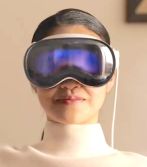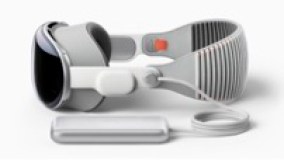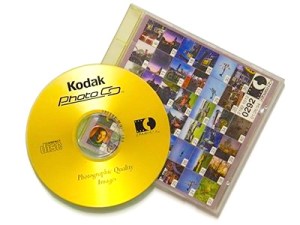A version of this article previously appeared in Fortune.
If you haven’t been paying attention Apple has started shipping its Apple Vision Pro, its take on a headset that combines Virtual Reality (VR) and Augmented Reality (AR). The product is an amazing technical tour de force.
But the product/market fit of this first iteration is a swing and a miss.


I’ve watched other world class consumer product companies make the same mistakes:
- Come up with amazing hardware that creates entirely new capabilities
- Forecast demand based on volumes of their previous consumer products
- Confuse consumers by defining a new category without a frame of reference
- Discover the hardware doesn’t match their existing consumer customer base needs
- Work hard (read spend a lot of money) on trying to “push” sales to their existing customers
- Revenue is woefully short of forecast. Marketing and capital expenses (new factory, high R&D expense) were predicated on consumer-scale sales. The new product is burning a ton of cash
- Ignore/not understand adjacent niche markets that would have “pulled” the product out of their hands, if they had developed niche-specific demos and outreach
- Eventually pivot to the niche markets that are excited about the product
- The niche markets make great beachhead markets, but are too small to match the inflated forecasts and the built-in burn rates of consumer scale sales
- Either…
- After multiple market pivots and changes in leadership, abandon the product
- Pivot and perserve
Déjà vu All Over Again
I lived the equivalent of this when Kodak (remember them?) launched a product in 1990 called PhotoCD. Kodak wanted consumers to put their film photos on their home CDROM drive and then display them on their televisions. You dropped off your film at a film processor and instead of just getting physical prints of your pictures they would scan the film, and burn them onto a Compact Disc. You’d go home with a Compact Disc with your pictures on it.
 I got a preview of PhotoCD when I was the head of marketing at SuperMac, a supplier of hardware and software for graphics professionals. The moment I saw the product I knew every one of my professional graphics customers (ad agencies, freelancers, photo studios, etc.) would want to use it. In fact, they would have paid a premium for it. I was floored when Kodak told me they were launching PhotoCD as a consumer product.
I got a preview of PhotoCD when I was the head of marketing at SuperMac, a supplier of hardware and software for graphics professionals. The moment I saw the product I knew every one of my professional graphics customers (ad agencies, freelancers, photo studios, etc.) would want to use it. In fact, they would have paid a premium for it. I was floored when Kodak told me they were launching PhotoCD as a consumer product.
The problem was that in 1990 consumers did not have CDROM drives to display the pictures. At the time even most personal computers lacked them. But every graphics professional did own a CDROM drive but most didn’t own a high-resolution film scanner – and PhotoCD would have been perfect for them – and the perfect launch customer. To this day I remember being lectured by a senior Kodak executive, “Steve you don’t get it, we’re experts at selling to consumers. We’ll sell them the CDROM drives as well.” (The Kodak CDROM drives were the size of professional audio equipment and depending on the model, costing $600-$1000 in today’s dollars.)

(And when consumer CDROM drives became available they couldn’t play the PhotoCD disks as they were encoded in a proprietary Kodak standard to lock you into their drives!) The result was that PhotoCD failed miserably as a consumer product. Subsequent pivots to professional graphics users (a segment another part of Kodak knew well) came too late, as low cost scanners and non-proprietary standards (JPEG) prevailed.
So what’s the lesson for Apple?
- Apple is trying to push Vision Pro into their existing consumer customers
- All the demos and existing applications are oriented to their consumer customers
- Apple did not create demos for how the Vision Pro could be used in new markets where users would jump on buying a Vision Pro. For example,
- There is proof of demand (here, here and here) of an adjacent mass market, helping millions of home owners repair things around the home
- There is proof of demand in industrial applications outside of the consumer space (here.) Every company that has complex machinery have been experimenting with AR for years. Imagine car repair with a Vision Pro AR tutorial. Or jet engine maintenance. Or the entire gamut of complex machinery.
All of these would have been great Vision Pro demos for training and repair. It’s hard to understand why Apple ignored these easy wins.
Getting it Right
Apple’s entry into new markets by creating new product categories – iPods, iPads, iPhones – is unprecedented in the history of the modern corporation – $300 billion (75% of their revenue) is from non-computer hardware. In addition, they’ve created an entirely new $85+ billion subscription business model; the App Store, iTunes, Apple Care, Apple Pay, Apple Cash, Apple Arcade, Apple Music, Apple TV.
It’s hard to remember, but the first version of these products launched with serious limitations that follow-on versions remedied. The first version of the iPhone only ran Apple software, it was a closed system without an app store, had no copy and paste, couldn’t record video, etc. The original Apple Watch was positioned as a fashion accessory. It wasn’t until later that Apple realized that the killer apps for the Watch were fitness and health. Fixing the technical flaws while finding the right markets for all these products took time and commitment.
The same will likely be true for the Vision Pro. Apple marketers will realize that adjacent spaces they are less familiar with will provide the first “got to have it” beachhead markets. Newer versions will ride the technology wave of lighter, and cheaper versions.
Apple’s CEO Tim Cook has made a personal bet on the Vision Pro. More than any other company they have sufficient resources (cash on hand and engineering talent) to pivot their way to product/market fit in the real markets that need it.
Here’s hoping they find it.
Filed under: Customer Development |